Valencia, a city with a rich history and vibrant culture, boasts a variety of museums that cater to diverse interests. Here’s a list of some of the prominent museums in Valencia and a brief description of each.
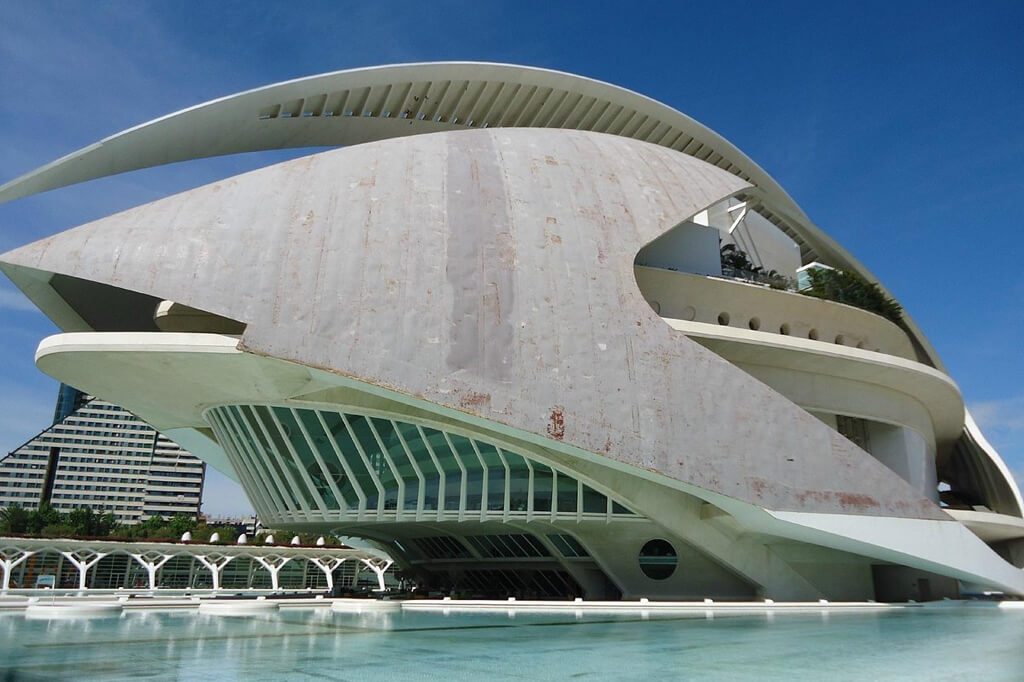
City of Arts and Sciences (Ciudad de las Artes y las Ciencias)
Visiting the City of Arts and Sciences in Valencia is like stepping into a futuristic world. This architectural masterpiece, designed by Santiago Calatrava and Félix Candela, stretches across a vast area, resembling a scene from a sci-fi movie. The complex is a celebration of knowledge and culture, housing several buildings, each dedicated to different aspects of science, art, and nature.
The Hemisfèric, resembling a giant eye, is a planetarium and IMAX cinema, offering a mesmerising experience as you gaze at the stars or immerse yourself in large-format films. The Oceanogràfic, Europe’s largest aquarium, takes you on an underwater journey through the world’s main marine ecosystems. The Príncipe Felipe Science Museum, with its interactive exhibits, makes learning about science fun and engaging for all ages.
The stunning Palau de les Arts Reina Sofía, an opera house and performing arts center, hosts world-class performances in its sophisticated auditoriums. The complex is not just about indoor experiences; its surrounding turquoise pools and lush green spaces invite leisurely walks and relaxation. A visit here is a journey through human creativity and ingenuity, a must-see for anyone interested in science, art, and architecture.
Valencia Museum of Fine Arts (Museo de Bellas Artes)
A visit to the Valencia Museum of Fine Arts, nestled in the tranquil surroundings of the old Turia riverbed, is a journey through the rich tapestry of Spanish art history. Housed in a beautifully restored 17th-century building, the museum boasts an impressive collection, making it one of Spain’s foremost art galleries. As you wander through its halls, you’re greeted by an array of masterpieces from the 14th to the 20th centuries, including works by renowned artists like Velázquez, El Greco, and Goya.
The museum’s layout guides you seamlessly through different artistic periods, offering a comprehensive overview of the evolution of Spanish painting. Each room is a new discovery, whether it’s the delicate brushstrokes of Renaissance works or the bold colors of Baroque art. The museum also showcases a fine selection of sculptures, contemporary art, and archaeological finds, providing a diverse cultural experience. With its serene atmosphere and rich collections, the Valencia Museum of Fine Arts is a haven for art lovers and a reflective escape from the bustling city streets.
Valencian Institute of Modern Art (IVAM)
A visit to the Valencian Institute of Modern Art (IVAM) immerses you in the cutting-edge world of contemporary art and design. Located in the heart of Valencia, this museum stands as a beacon of modern creativity, showcasing a diverse range of 20th and 21st-century artworks. As you step inside, the minimalist architecture of the building sets the tone for an avant-garde experience.
IVAM’s collection is a dynamic mix of paintings, sculptures, and installations, with a strong emphasis on abstract and experimental art. The museum frequently rotates its exhibitions, ensuring that each visit offers something new and thought-provoking. Renowned for its commitment to innovation, IVAM features works by both established and emerging artists, providing a platform for a variety of artistic voices.
Interactive displays and educational programs make the museum an engaging space for all ages. Whether you’re an art aficionado or a casual visitor, IVAM challenges your perceptions and invites you to explore the ever-evolving landscape of contemporary art.
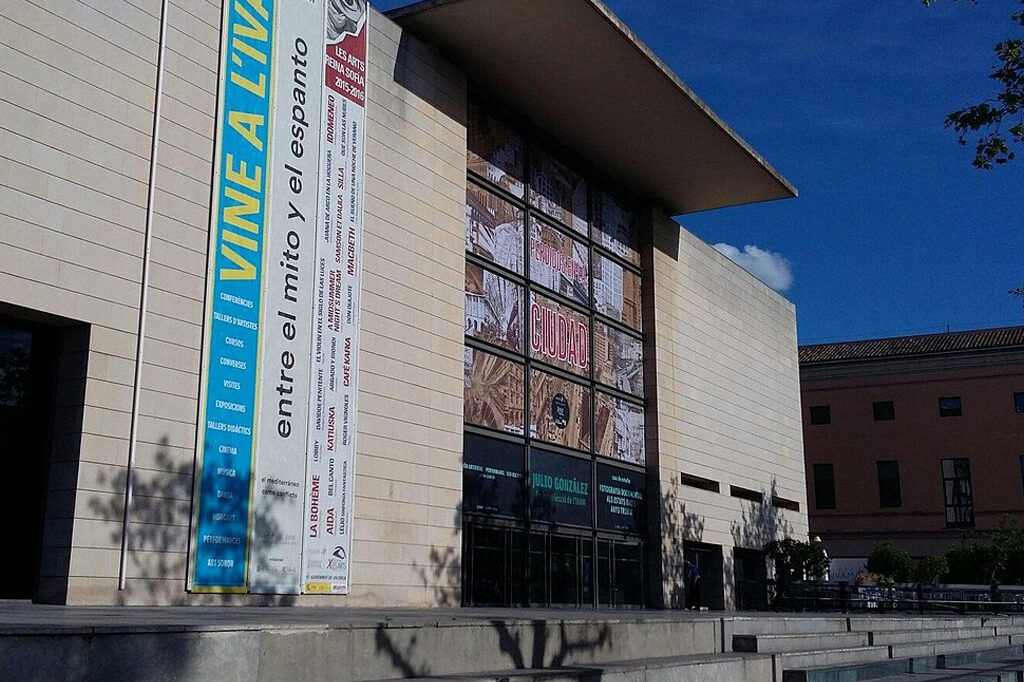
National Ceramics Museum (Museo Nacional de Cerámica)
A visit to the National Ceramics Museum in Valencia is a journey through the rich history of Spanish ceramics, housed in the opulent Palacio del Marqués de Dos Aguas. The palace itself, with its ornate alabaster façade, is a masterpiece, setting the stage for the treasures within. As you wander through the rooms, you are greeted by an exquisite collection of ceramics that spans from ancient times to the contemporary era.
The museum showcases a diverse range of pottery, porcelain, and tiles, reflecting the intricate craftsmanship and artistic evolution of ceramics in Spain. Highlights include traditional Valencian tiles, delicate pieces from the Royal Porcelain Factory, and Moorish-inspired designs. Each exhibit tells a story of cultural exchange and innovation, offering a glimpse into the social and historical context of these beautiful works.
Interactive displays and detailed descriptions enrich the experience, making the museum both educational and visually captivating. A visit here is not just about admiring ceramics; it’s an exploration of Spain’s artistic heritage and a testament to the timeless beauty of this craft.
Almoina Archaeological Center
A visit to the Almoina Archaeological Center in Valencia is like stepping back in time. This remarkable site, located near the Valencia Cathedral, offers a unique window into the city’s ancient past, showcasing ruins that date back over 2,000 years. As you explore, you’ll traverse glass walkways suspended over the excavated remains of Roman, Visigothic, and Arabic structures, creating a tangible connection to history.
The center ingeniously integrates modern architecture with ancient ruins, allowing visitors to observe the layers of Valencia’s historical evolution up close. Interactive displays and informative panels guide you through the site, explaining the significance of each ruin, from Roman baths to medieval walls. The well-preserved artifacts and remnants of buildings provide a fascinating insight into the daily lives of Valencia’s former inhabitants.
This immersive experience is not just educational but also awe-inspiring, as it brings to life the rich tapestry of cultures that have shaped Valencia. A visit to Almoina is a must for history enthusiasts and anyone curious about the ancient roots of this vibrant city.
Fallas Museum (Museo Fallero)
A visit to the Fallas Museum (Museo Fallero) in Valencia is a vibrant journey into the heart of one of Spain’s most unique and colourful festivals, Las Fallas. This museum celebrates the annual event known for its extraordinary street sculptures, fiery displays, and cultural significance. Inside, you’re greeted by an array of ‘ninots’ – intricately designed figures saved from the flames by popular vote each year. These figures, ranging from satirical to whimsical, are a testament to the creativity and craftsmanship of the Fallas artists.
As you wander through the museum, you’ll be captivated by the evolution of the festival’s artistry over the years. Each ninot tells a story, reflecting the social and political narratives of its time. Interactive exhibits and informative panels provide deeper insight into the history and significance of the festival, enhancing your understanding of this UNESCO-listed intangible cultural heritage.
The Fallas Museum is not just a display of artistic talent; it’s a celebration of community spirit and tradition, offering a unique glimpse into Valencian culture. It’s an essential visit for anyone looking to experience the essence of Valencia’s most fiery and festive tradition.
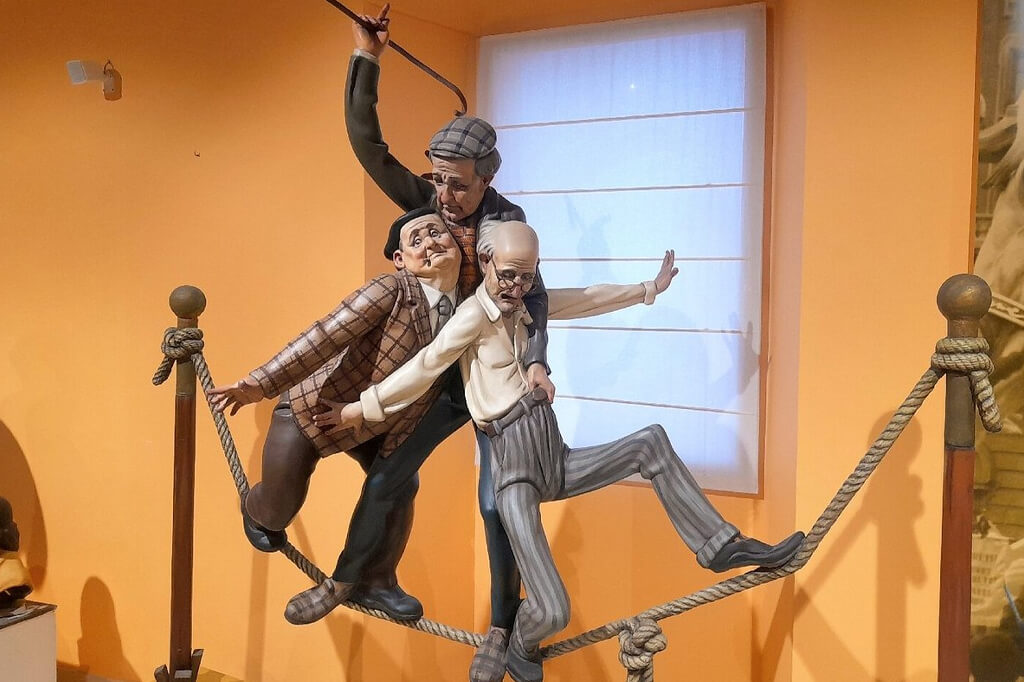
Museum of Rice (Museo del Arroz)
A visit to the Museum of Rice (Museo del Arroz) in Valencia offers a deep dive into the historical and cultural significance of rice cultivation in the region. Housed in a beautifully restored former rice mill, the museum is a tribute to the crop that shapes the Valencian landscape and cuisine. As you explore the museum, you’ll discover the evolution of rice farming techniques, from traditional methods to modern advancements.
The exhibits showcase old machinery, tools, and photographs, painting a vivid picture of the labour-intensive process behind rice production. Interactive displays and informative panels provide insights into the social and economic impact of rice on the Valencian community. The museum also highlights the integral role of rice in local gastronomy, particularly in dishes like paella.
Visiting the Museum of Rice is not just an educational experience; it’s a journey through a vital part of Valencia’s heritage, offering a unique perspective on the region’s agricultural and culinary traditions.
Valencia History Museum (Museo de Historia de Valencia)
A visit to the Valencia History Museum (Museo de Historia de Valencia) is a captivating journey through the rich tapestry of Valencia’s past. Nestled in a former water deposit, the museum’s unique setting complements its extensive collection, which chronicles the city’s evolution from ancient times to the present day.
As you wander through the museum, you’ll encounter a diverse array of exhibits, including archaeological artifacts, historical documents, and interactive multimedia displays. These exhibits vividly illustrate key moments in Valencia’s history, from Roman occupation and Islamic rule to the Christian reconquest and modern developments.
The museum’s innovative use of technology brings history to life, allowing visitors to engage with Valencia’s past in an immersive and interactive way. Whether it’s exploring ancient ruins or understanding the impact of historical events on the city’s development, the Valencia History Museum offers a comprehensive and engaging experience for history enthusiasts and casual visitors alike.
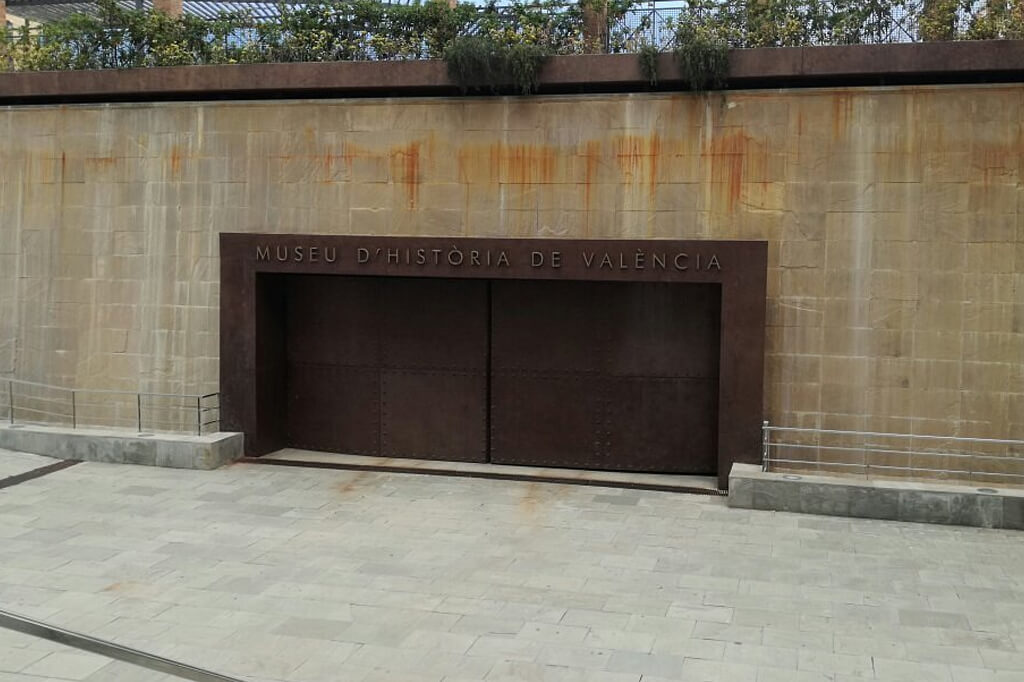
Museum of Natural Sciences
A visit to the Valencia Museum of Natural Sciences offers a fascinating glimpse into the natural world, blending education with wonder. Nestled in the picturesque Jardines del Real, the museum is a treasure trove of natural history, showcasing an impressive collection that spans geology, paleontology, and biodiversity.
As you explore the museum, you’ll be transported through time and space. The exhibits feature an array of fossils, including dinosaurs that once roamed the earth, and minerals that tell the story of our planet’s geological past. The biodiversity section is particularly engaging, displaying the rich variety of life forms, from the tiniest insects to the largest mammals.
Interactive displays and informative panels make the experience both educational and enjoyable for visitors of all ages. The museum’s commitment to promoting environmental awareness and conservation is evident throughout the exhibits. A visit here is not just a learning experience but also an opportunity to appreciate the intricate and beautiful tapestry of life on Earth.
Lladro Museum
A visit to the Lladró Museum in Valencia is a journey into the world of high-end porcelain artistry, showcasing the renowned craftsmanship of the Lladró brand. This museum, located in the heart of the city, offers a unique glimpse into the intricate process of creating Lladró’s exquisite porcelain pieces, famous worldwide for their delicate beauty and intricate detail.
As you walk through the museum, you are greeted by an array of stunning porcelain artworks, ranging from classical figures to contemporary designs. Each piece reflects the meticulous attention to detail and artistic skill that Lladró is known for. The museum not only displays finished pieces but also provides insight into the creation process. Visitors can observe the transformation from raw material to intricate sculptures, understanding the painting, firing, and assembly stages.
The Lladró Museum is more than just a display of porcelain art; it’s an immersive experience that highlights the blend of traditional craftsmanship with modern innovation, making it a must-visit for art enthusiasts and curious travellers alike.
Bullfighting Museum (Museo Taurino)
A visit to the Bullfighting Museum (Museo Taurino) in Valencia offers a deep dive into the controversial yet culturally significant world of Spanish bullfighting. This museum, nestled in the heart of the city, presents a comprehensive history of bullfighting, tracing its roots and evolution over centuries.
As you step inside, you’re transported into a realm that celebrates the pageantry and skill of this traditional spectacle. The museum’s collection includes an array of artifacts, from the ornate “traje de luces” (bullfighter’s costume) to the capes and swords used in the arena. Each item tells a story of bravery, artistry, and tradition.
Photographs and paintings adorn the walls, capturing iconic moments and famous matadors, offering a visual narrative of bullfighting’s impact on Spanish culture. The museum also confronts the sport’s controversies, providing a balanced perspective. Whether you’re a bullfighting aficionado or a curious traveler, the Bullfighting Museum presents a unique lens through which to understand a key aspect of Spanish heritage.
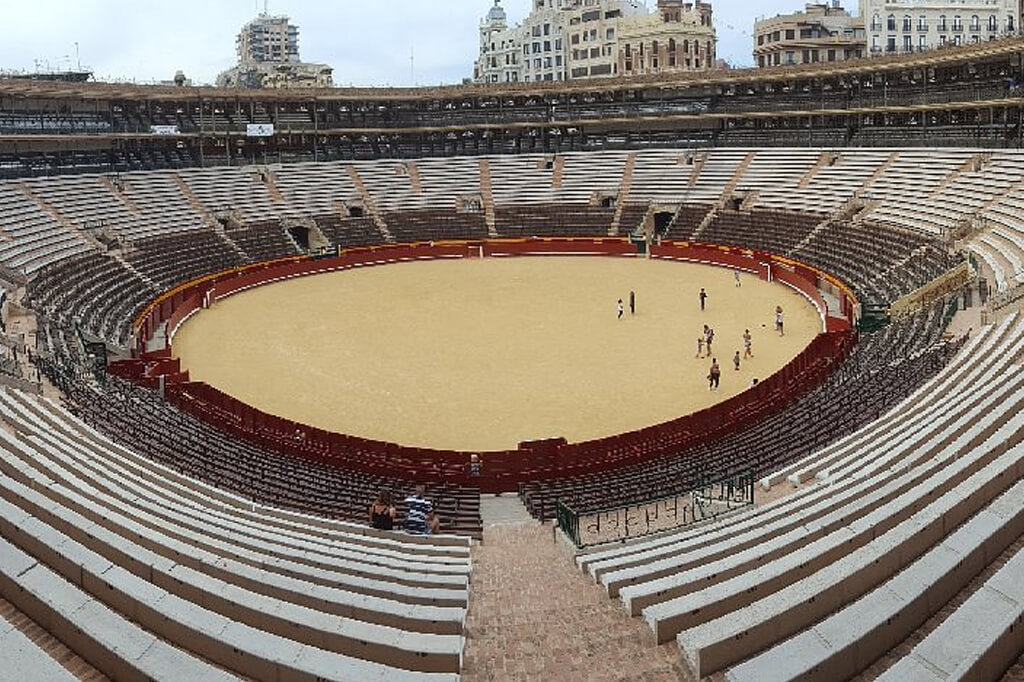
Museum of Prehistory of Valencia (Museo de Prehistoria)
A visit to the Museum of Prehistory of Valencia (Museo de Prehistoria) is a journey back in time, offering a fascinating glimpse into the distant past. Located in the heart of Valencia, this museum is a treasure trove of archaeological discoveries, showcasing the rich prehistoric heritage of the region.
As you wander through its halls, you’re greeted by a diverse collection of artifacts, from ancient tools and pottery to stunning prehistoric art. Each exhibit is thoughtfully curated, telling the story of early human settlements and their evolution through the ages. The museum’s highlights include detailed reconstructions of prehistoric scenes, giving visitors a vivid sense of daily life in ancient times.
Interactive displays and educational panels provide context, making the museum an engaging experience for all ages. Whether you’re a history buff or simply curious about the origins of human civilization, the Museum of Prehistory of Valencia offers a captivating and enlightening exploration of our shared past.
González Martí National Museum of Ceramics and Sumptuary Arts
A visit to the González Martí National Museum of Ceramics and Sumptuary Arts in Valencia is a mesmerising experience, blending artistic beauty with historical depth. Housed in the opulent Palacio del Marqués de Dos Aguas, the museum’s façade, an extravagant example of Rococo architecture, is a spectacle in itself, adorned with elaborate alabaster carvings.
Inside, the museum unfolds an impressive collection of ceramics, ranging from ancient Moorish earthenware to contemporary pieces. The highlight is the exquisite array of Valencian ceramics, showcasing the region’s rich tradition in pottery and tile-making. Each room is a gateway to different eras and styles, with sumptuous displays of porcelain, glassware, and decorative arts.
The museum also offers a glimpse into aristocratic life through lavishly decorated period rooms. The intricate tile work, ornate furniture, and sumptuous textiles transport visitors back in time. For art enthusiasts and history lovers alike, this museum presents a unique fusion of artistry and elegance, capturing the essence of Valencia’s cultural heritage.
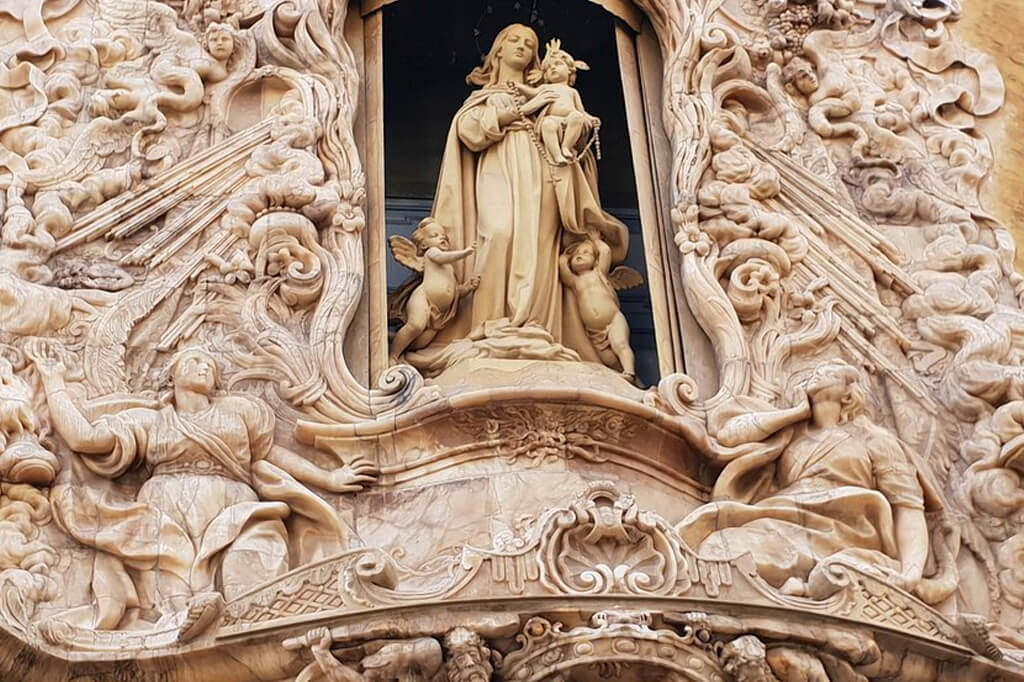
Patriarch’s Museum
Visiting the Patriarch’s Museum, nestled within the serene confines of the Royal College of the Corpus Christi in Valencia, is like stepping into a realm where art and spirituality converge. This hidden gem, often overlooked by the typical tourist trail, offers an intimate encounter with an impressive collection of religious art from the 16th and 17th centuries.
The museum’s collection, though modest in size, is rich in quality, featuring works by eminent artists like El Greco, Caravaggio, and Van Dyck. Each piece, whether it be a painting, sculpture, or religious artifact, tells a story of faith and devotion, reflecting the deep spiritual undercurrents of the era.
The tranquil atmosphere of the museum, combined with the stunning Baroque architecture of the college, creates a contemplative space that invites visitors to pause and reflect. The Patriarch’s Museum is not just a showcase of religious art; it’s a journey into the heart of Valencia’s spiritual history, offering a peaceful retreat from the bustling city outside.
Museum of the Sea (Museo del Mar)
A visit to the Museum of the Sea (Museo del Mar) in Valencia is a captivating journey through the maritime history of the region. This museum, located in the heart of the city’s port area, offers a unique glimpse into the relationship between Valencia and the Mediterranean Sea, a bond that has shaped the city’s identity for centuries.
As you wander through the museum’s exhibits, you are transported back in time, exploring ancient maritime traditions, the evolution of naval technology, and the city’s pivotal role in maritime trade. The museum showcases a diverse collection of nautical instruments, model ships, and historical documents, each telling a story of adventure, exploration, and the challenges faced by those who took to the seas.
Interactive displays and educational panels make the Museum of the Sea an engaging experience for all ages. It’s a place where history comes alive, offering insights not only into Valencia’s past but also into the broader narrative of maritime exploration and its impact on our world.
Ethnology Museum (Museo de Etnología)
A visit to the Ethnology Museum (Museo de Etnología) in Valencia is an enlightening journey into the rich tapestry of cultural traditions and social history. Nestled in the heart of the city, this museum offers a deep dive into the diverse ways of life, customs, and practices that have shaped the region and its people.
As you explore the museum, you encounter a variety of exhibits that vividly illustrate the daily lives of different communities, both local and global. From traditional clothing and tools to rituals and festivals, each display provides a window into the complexities of human societies. The museum excels in showcasing the evolution of local Valencian culture, offering a unique perspective on how traditions have adapted over time.
Interactive and multimedia exhibits engage visitors of all ages, making the Ethnology Museum a dynamic and educational experience. It’s a place that celebrates diversity and fosters a deeper understanding of the human experience, connecting the past with the present in a meaningful way.
Blasco Ibáñez House Museum
Visiting the Blasco Ibáñez House Museum in Valencia is like stepping back in time to the early 20th century, immersing oneself in the life and times of one of Spain’s most influential writers, Vicente Blasco Ibáñez. The museum, once the writer’s home, is a beautifully preserved villa located near the beach, offering a glimpse into his personal and professional world.
As you wander through the rooms, you are surrounded by original furnishings and personal belongings that belonged to Blasco Ibáñez. His study, where he penned many of his famous works, remains a highlight, filled with his writing desk, books, and manuscripts, evoking a sense of the writer’s presence. The walls adorned with photographs and personal memorabilia tell the story of his life, from his political endeavors to his travels and literary achievements.
The museum also hosts temporary exhibitions and cultural events, adding layers of contemporary relevance to the historical setting. This visit is not just a journey through a writer’s home but a deep dive into the cultural and literary heritage of Valencia.
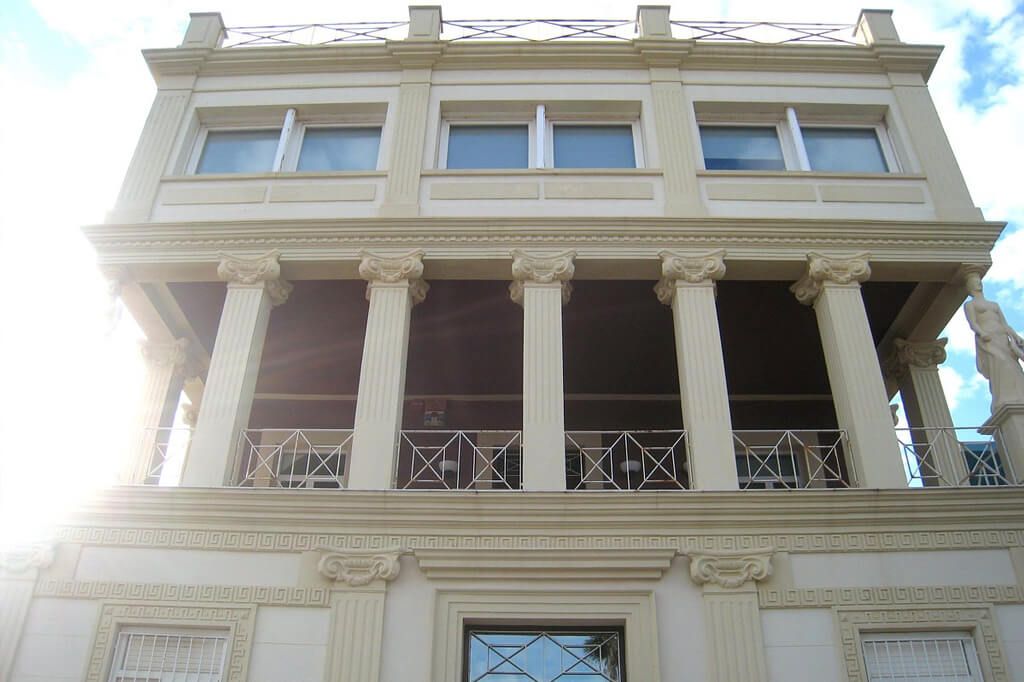
These are just some of the many museums Valencia has to offer. Each provides a unique insight into the city’s rich cultural, historical, and artistic tapestry. Whether you’re an art lover, history buff, or just curious, Valencia’s museums have something to offer.
